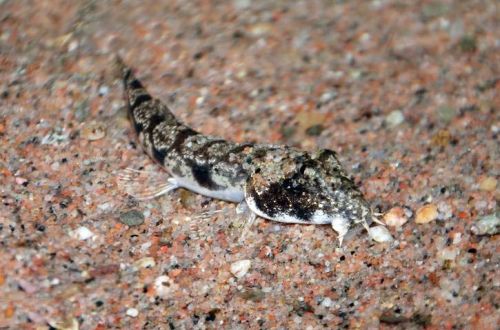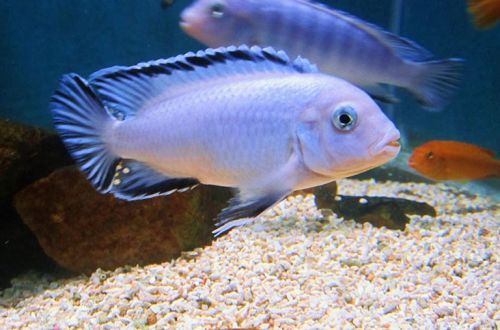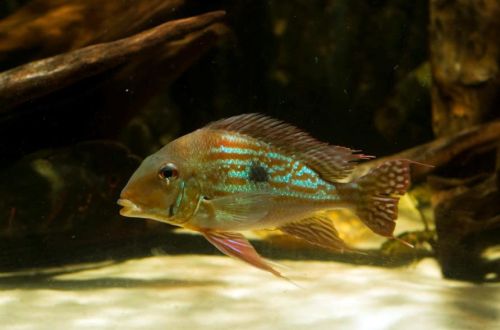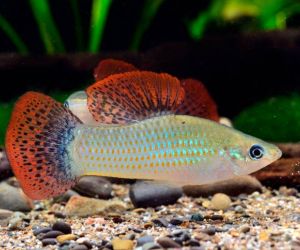
Gongota fish
Gongota fish, scientific name Canthophrys gongota, belongs to the Cobitidae (Loach) family. In nature, it inhabits the Ganges and Brahmaputra river basins in Nepal, northern India and Bangladesh. It occurs in small rivers, streams with a weak current and soft sandy silted substrates.

Description
Adults reach a length of about 13 cm. The fish has an elongated body with a large head. The eyes are located high on the top of the head, and the mouth is shifted to the underside. The fins are short.
The structure of the body allows digging into a soft substrate, leaving only protruding eyes on the surface. “Sandy” coloration also contributes to camouflage.
Behavior and Compatibility
Peaceful calm look, prefers to be in a group of 6-8 individuals. As neighbors, it is recommended to use fish that live in the water column or near the surface.
Brief information:
- The volume of the aquarium – from 300 liters.
- Temperature – 18-22°C
- Value pH — 6.0–7.0
- Water hardness – soft (2-12 dGH)
- Substrate type – sandy
- Lighting – subdued
- Brackish water – no
- Water movement – moderate or weak
- The size of the fish is up to 13 cm.
- Nutrition – any drowning
- Temperament – peaceful
- Keeping in a group of 6-8 individuals
Maintenance and care, arrangement of aquariums
The optimal size of the aquarium for a group of 6-8 Gongota fish starts from 300 liters. In the design, the focus is on the lower tier. It is necessary to use a soft sandy substrate in which the fish could dig. Pebble soil can cause injury while digging.
A good addition would be the placement of natural snags, leaves of some trees. Other decor is optional, in particular plants.
Being a native of flowing waters, the fish is sensitive to the accumulation of organic waste. It is important to replace part of the water weekly with fresh water (30–50% of the volume), combined with the removal of accumulated waste products, uneaten food residues, etc.
It is also necessary to ensure high oxygen saturation. Additional aeration may be required.
Does not respond well to elevated temperatures. Comfortable conditions are in the range of 18–22°C. For this reason, there is no need for a heating system. During the hot summer months, it may be necessary to cool the aquarium.
Food
It feeds by capturing and sifting soil particles through the gills, extracting small crustaceans, worms and other organisms from it.
In the home aquarium, it is acceptable to serve dry sinking foods, as well as frozen or fresh brine shrimp, daphnia, bloodworms and similar products.
Sources: fishbase.in, seriouslyfish.com





